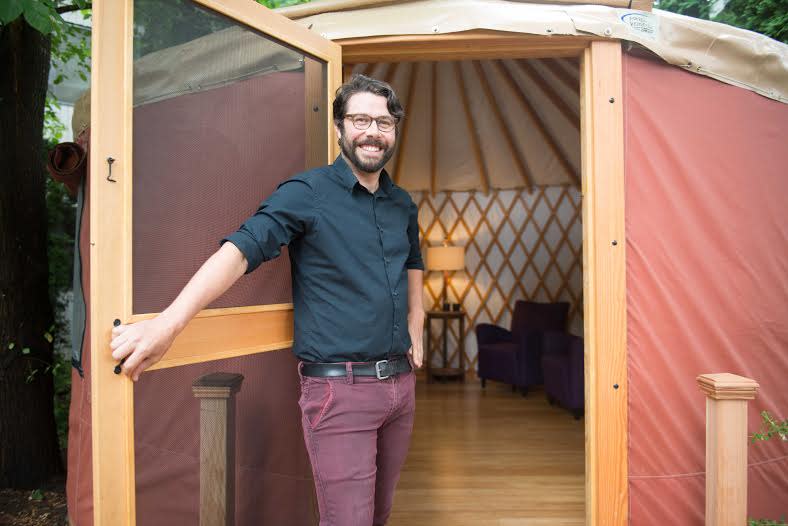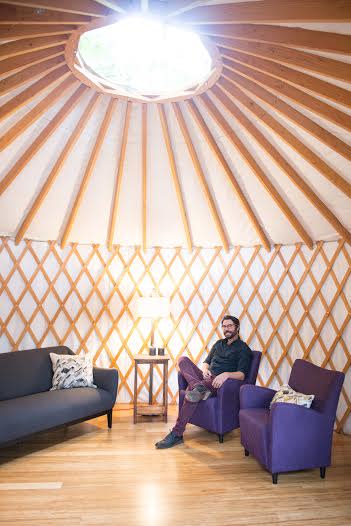Yurt Therapy is Now a Thing in Portland

Image: Clara Johnson
Despite what Freud would have you believe, therapy is not actually a Man’s World. Female therapists outnumber their male counterparts by a wide margin—not to mention the whole ‘let’s talk about our feelings’ MO can be daunting for members of a demographic historically valued for strong stoicism. Introducing a kinetic element to the otherwise static realm of talk therapy has the potential to transform the way we approach mental health. Even just by occupying the hands of a client with something tactile like a plant or a shovel, many therapists—including local Mitch Bacon—have seen conversation flow much easier.
Bacon is no stranger to the great outdoors and bringing therapy outside of the traditional office. During his five years as a wilderness therapy guide in Idaho, he witnessed how the natural environment allowed families to escape distraction and achieve oneness with the moment. This yielded a better awareness of individuals’ feelings and amplified what they experienced, together.
It was only after moving his practice into an uber–cool office in Southeast Portland that Mitch started to feel disconnected. He was the epitome of psychological chic, with corduroy blazers and leather couches. Still something was wrong, and his mostly-male client base felt the same detachment.
Now, Bacon seeks to bridge the gap between the wilderness and Portland’s urban landscape—by cultivating a garden space as a part of his practice. At the center of the concept is his new office: a yurt, the long-term tent of Nomadic Asian culture, sitting in the backyard of Portland Family Health on SE Woodstock. Bacon’s environmental venture has been titled Ground: Therapy Rooted in Nature.

Image: Clara Johnson
The yurt came into being after an enormously successful crowd funding campaign where donors surpassed Mitch’s original goal. “It’s taught me how engaged people can be when a vision involves passion and the community. People care, help, and want to do things they believe in,” he says.
The garden surrounding the yurt provides an extension of this concept, and Mitch plans to work in it with his clients. He sees it as an active space that can be used not only to more easily generate conversation, but to witness the problems people encounter first hand. Mitch explains that with couples, “it’s easy to get into airing dirty laundry. But when putting a couple in a space where it becomes ‘here, let’s plant this,’ you’re forcing the hand to expose how they interact, creating learning moments."
Though there aren’t many studies on the subject, Bacon has his own theories about why being in nature encourages breakthroughs in therapy—one being that movement “distracts the mind” enough to open up avenues into more authentic discussion. Additionally, tasked activity roots a conversation in the physical world: walking meditation, for instance, privileges an active connection with the world over withdrawn reflection. Marrying these concepts with the sense of presence one encounters when in nature was a perfect match.




